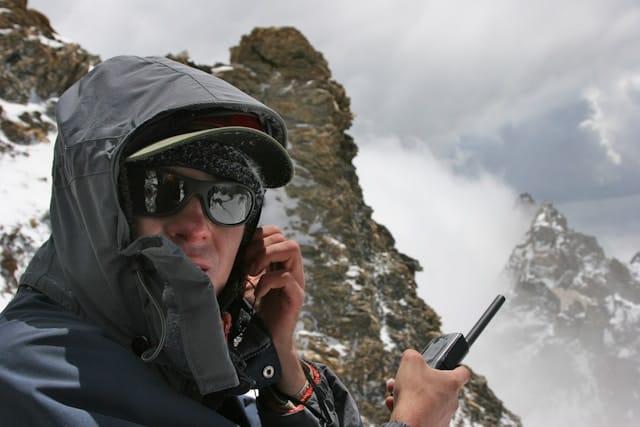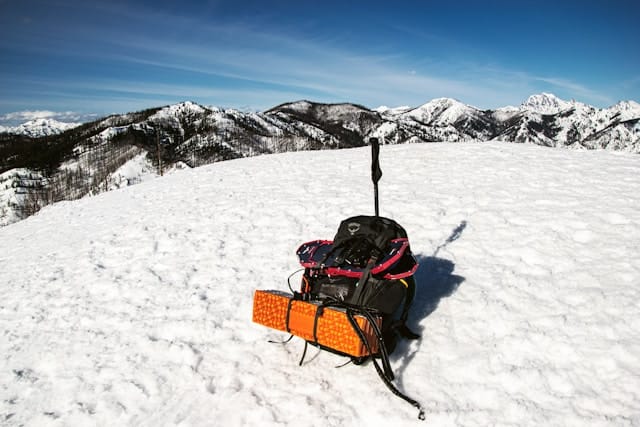Learn about Do Walkie-Talkies Work in the Mountains. Learn how terrain, power, and frequency affect performance and discover tips for choosing the best radios for outdoor mountain use.
The walkie-talkies are necessary communication gadgets among the hikers, campers, rescue teams, and outdoor adventurers. In case you are going to mountainous areas, you may need to know what walkie-talkies are and how they perform in rough areas, and whether they will keep you in touch or leave you behind.
Do Walkie-Talkies Work in the Mountains?
Yes, walkie-talkies do indeed work in the mountains, but their operation is based on terrain, power output, and the type of frequency. They perform optimally with the straight-line-of-sight and elevated heights. Valleys, rock walls, or thick woods may drop the range, though storey GMRS or UHF communications usually can be trusted to work well in rugged mountain terrain.
Advantages of using walkie-talkies in mountainous areas
Walkie-talkies are needed by hikers and climbers as mobile networks are not effective in places with no signal. They offer immediate connectivity, extended power capability, and waterproof resistance. Their direct radio signal, even in distant areas, enhances coordination, safety, and emergency responses in rough mountainous areas.

5 Best Walkie Talkies for the Mountains
Rocky Talkie Mountain Radio
The Rocky Talkie Mountain Radio is a rugged, adventure-ready communication device that is aimed at climbers and hikers. It also provides excellent UHF transmission, extends its battery life, and has good operation in steep terrain environments; thus, it is very reliable in mountain environments.
Rocky Talkie 5 Watt Radio
The Rocky Talkie 5 Watt Radio has a long distance with a strong transmission that is suited for rough terrain. Its high power enhances communication despite obstacles, and secure clips and durable construction make it the best tool to use by mountaineers who require a reliable long-range connection.
Oxbow Gear Renegade 2.0
The Oxbow Gear Renegade 2.0 is designed to withstand the extreme environment, as it has great clarity, weatherproofing, and range. Its small size, improved functions, and excellent UHF capabilities make it ideal for mountain riders, hikers, and adventure teams.
Midland T10 X-Talker
X-Talker The Midland T10 X-Talker is a low-priced, easy-to-use walkie-talkie that works well in mixed conditions. It is easy to communicate, has several channels and weather alerts, and is therefore an easy option to be used by anyone who wants to go hiking in the mountainous or forested areas when doing casual hiking.
Baofeng GT-18
Baofeng GT-18 provides high reception, adjustable frequencies, and stable long-distance operation in the mountainous area. Its sturdy construction, modern features, and powerful performance make it a practical choice for the seasoned hiker and outdoor communication user.
Factors Affecting Walkie Talkie Performance in the Mountains
1. Range and Line of Sight
Walkie-talkies are suitable in a clear line of sight. Mountains, cliffs, and ridges can interfere with the signals, and it will also have a range that is quite limited, particularly when the users are on a steep or uneven surface.
2. Terrain
The topography of mountainous areas has an influence on the radio wave propagation. A valley, thick forest, or rocky building rocks may weaken or block the signals, whereas elevated lands or open ridges will enhance the performance of communications.
3. Frequency
Mountains will not act the same way at different frequencies. UHF has a better penetration of obstacles, whereas VHF works well in open spaces. The right frequency band selection makes a lot of difference in enhancing the communication reliability in rough terrain.
4. Weather Conditions
The weather affects the performance of the radio. Signal strength can be undermined by heavy rain, snow, fog, or storms, whereas during sunny and dry seasons in mountainous areas, walkie-talkie communication is usually stronger and more consistent.
5. Power Output
Increased power output gives a greater distance of communication. Radios with low power have difficulty in mountainous terrain, whereas more powerful GMRS or professional radios will be able to offer greater signal penetration and distance under adverse terrain conditions.
Tips to Improve the Walkie-Talkie Signal in the Mountains
- Relocate to elevated areas to recover the line of sight.
- Better penetration is possible with UHF radios.
- The antenna can be kept in the vertical position to achieve the maximum coverage.
- Alternate channels to prevent interference.
- Use repeaters (where possible) to lengthen mountain communication.
- Bring spares like batteries because cold weather takes away energy.
When Walkie-Talkies Won’t Work in the Mountains
Walkie-talkies may fail when:
- There is a huge mountain that separates users.
- The radios are low power (<1W)
- Antennas are blocked
- You are in a cave, canyon, or steep valley deep in.
- Walkie-talkies are used, but of toy grade.
Satellite communication or a high-power professional radio is suggested in such situations.
How to choose a suitable walkie-talkie for outdoor mountains?
1. Waterproof level of walkie-talkies
Select a walkie-talkie that has a high waterproof level, preferably IP54-IP67, so that it can withstand rain, snow, and also accidental falls in water, thus ensuring good performance in rough mountainous conditions.
2. Communication distance of walkie-talkies
Choose a walkie-talkie that has high-range communication capabilities, particularly the UHF models or GMRS models, which are more effective due to mountainous terrain and manage to transmit the signals further without any area interference or distortion.
3. Battery life of walkie-talkies
The preferred battery life of a device is 12-20 hours, and it is recommended to seek models with an option of using backup batteries or power banks to keep the device operational during long mountain hikes.
4. Ease of use of walkie-talkies
Select a walkie-talkie that has simple controls, clear buttons, audio loudness, and easy menus that allow easy use even with gloves on, hence best suited in a fast outdoor mountain environment.

FAQs
Is waterproofing important for mountain walkie-talkies?
Yes. The mountain settings are usually characterized by rain, snow, fog, and ford. The waterproof rating of IP54-IP67 gives it the strength and dependability to be used in extreme outdoor situations.
Are cheap walkie-talkies good enough for mountains?
Cheap walkie-talkies can be of poor range, poor power, and poor quality. In the case of the mountains, it is worthwhile to invest in mid-range or professional-grade models that are more reliable in their signals and that perform in rough terrain.
Do walkie-talkies work without cell phone signals?
Yes. Radio frequency is used in walkie-talkies and not in cellular networks. They can be used even in the distant mountainous regions where the phone network is as dead as a corpse, hence making it ideal when it comes to safety and communication in a group.
Conclusion
Mountain environment Walkie-talkies have been one of the surest means of communication in the mountain environment, especially where there are gaps in mobile calls. Selecting the correct frequency, power output, and waterproof functions, hikers can be connected, increase the level of safety, and maintain clear communication during the harsh conditions of the mountain terrain and alternating weather conditions.

